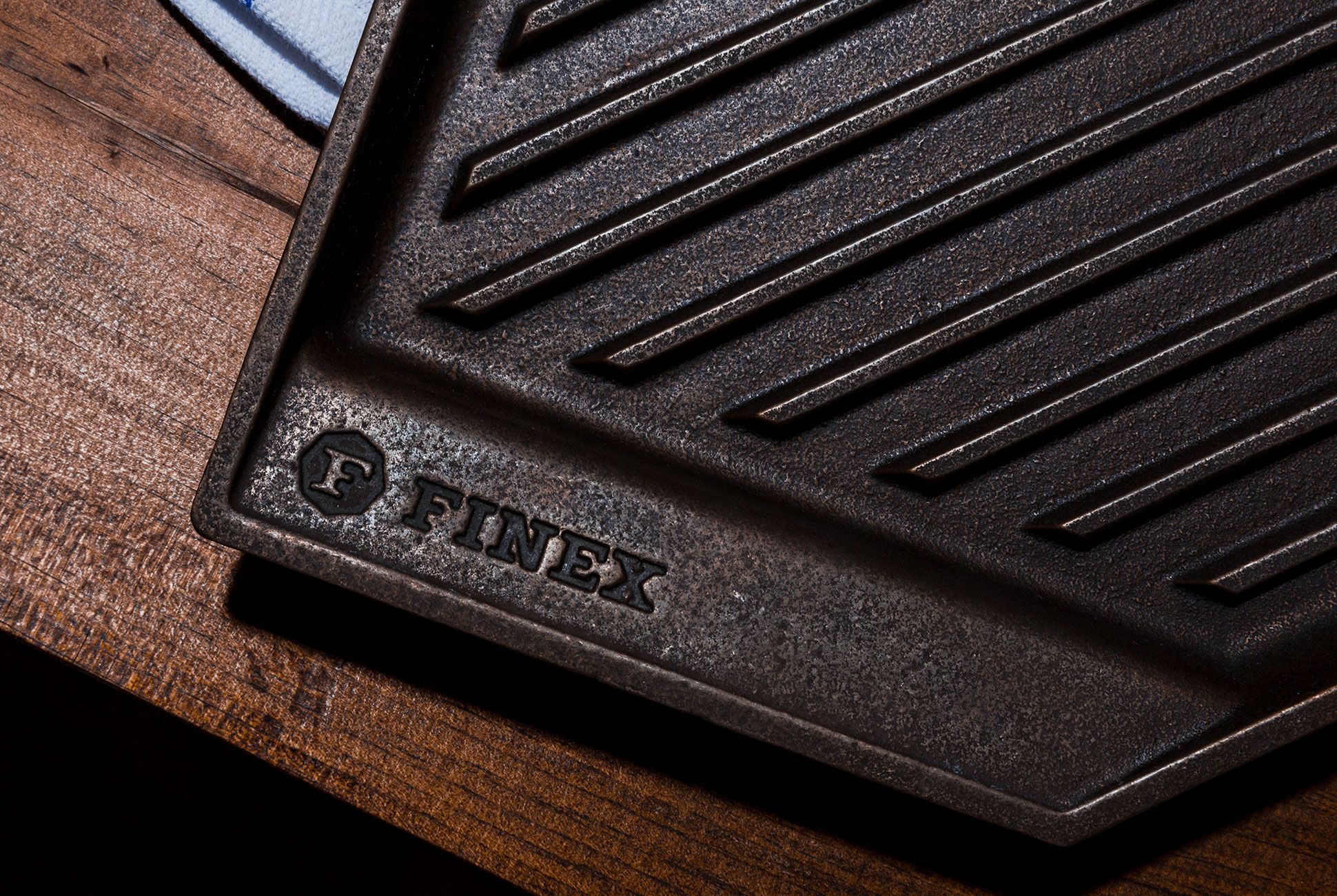Cast iron cookware is a tool that, for devotees, can easily be confounded with a toy. It’s used with affection and obsessively cared for — seasoned to perfection and protected from soap at all costs. But not all cast iron is good cast iron. Mass production has made middling quality and rough surfaces commonplace, and antique cookware a collector’s item, with high-quality pieces selling for hundreds of dollars online. A handful of new brands are seeking to land somewhere in the middle, reviving the lost craft of iron casting to produce antique-quality cookware in the 21st century.
Portland, Oregon–based upstart brand Finex is one such purveyor. Recognizing that a high-quality product begins with the raw materials, Finex only partners with select American foundries to source higher-quality, fine-grain iron. Once the cookware has been cast, Oregon-based artisans grind, machine, tumble and polish each piece, largely by hand, to ensure a smooth finish. The cookware’s custom-wound, stay-cool stainless steel spring handle and brass end cap, both made locally, are assembled manually.
“In the past few years, we’ve learned how to bring back these traditional crafting methods to ensure that our product is made from honest and trusted materials,” says Finex cofounder and CEO Ron Khormaei, citing hand-polished stainless steel and an hourlong seasoning process that involves organic flaxseed oil rather than palm oil and ammonia. “It takes more work, but we can comfortably stand behind the promise that our cookware is good forever.” The obvious difference lies in the cast iron’s feel, which is marked by a glass-smooth surface; other advantages are revealed upon use.
Having turned to Kickstarter to get the first skillet off the ground in 2013, Khormaei and fellow co-founder Mike Whitehead have since expanded the Finex product line to include grill pans and a sauce pot. The unifying thread, aside from craftsmanship, is a series of solution-guided innovations, like large, steel-wrapped handles that stay cool for easier holding and an angular edge for easier pouring. In other words, it’s cookware made to be used in the way that people use cookware.
Cast iron is a bad conductor, but it wins in the realm of heat retention, which directly correlates to searing abilities.
“One of our core principles is to introduce a ‘functional innovation’ with each new product,” Khormaei says. “For [our grill pans, we used] a clipped rectangular design that keeps our characteristic industrial design while fitting neatly on the stove, in the oven or away in the cupboard.”
According to Khormaei, early customers were asking for a heavy-duty grill pan, either to use indoors or for better control over outdoor grilling and smoking. “We eventually launched a 10-inch and dual handle 12-inch grill pan with functional, extra tall grill ribs, spaced out just enough to deliver perfect grill marks. Figuring out the ideal grill rib height, thickness and spacing took several months.”


